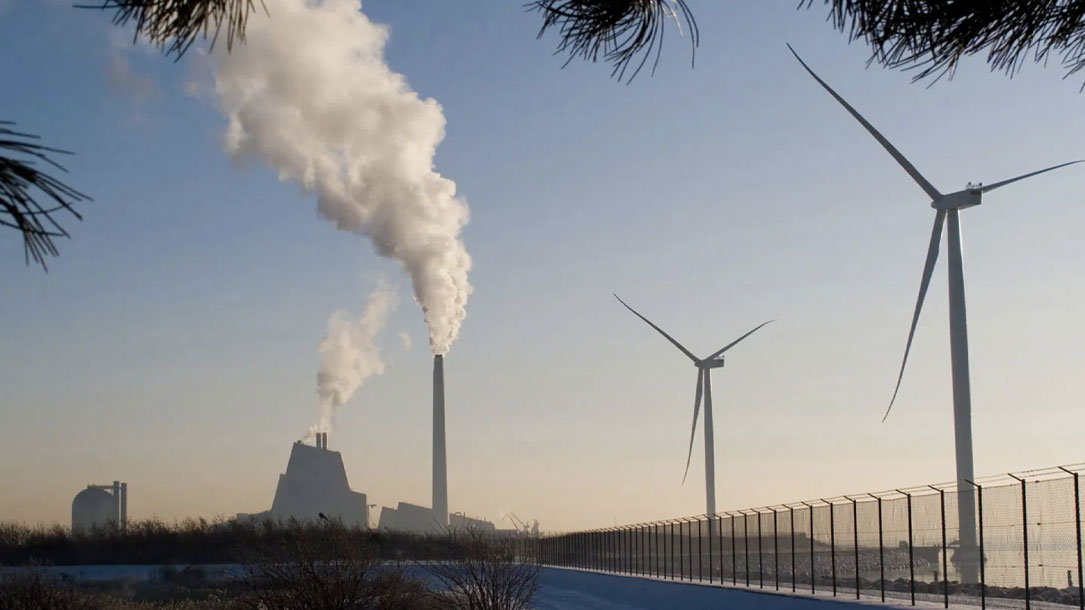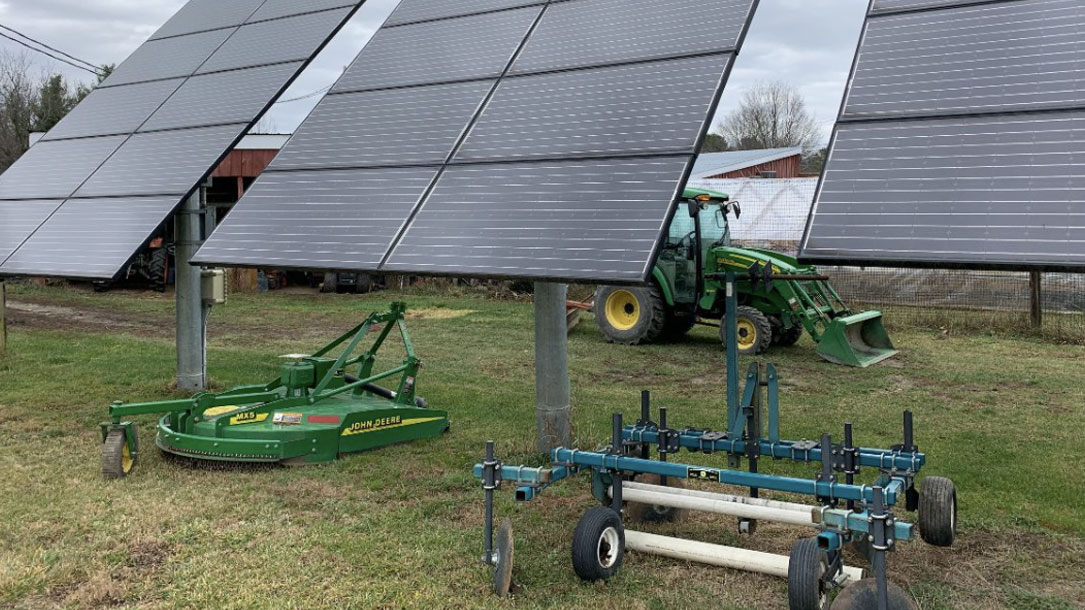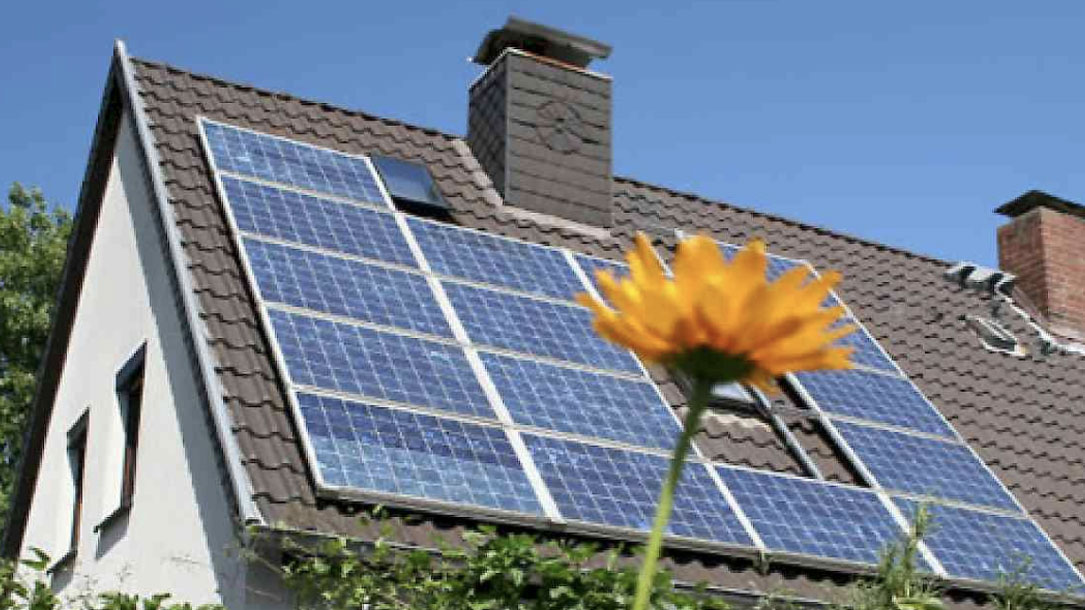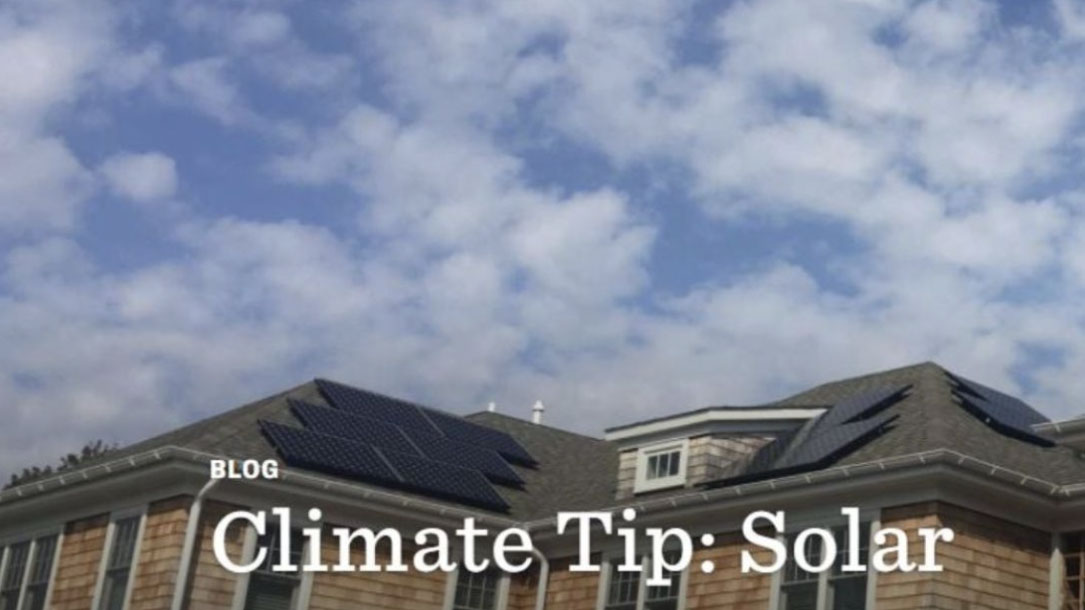Home > Climate News >

Greens: Divided on ‘clean’ energy? Or closer than they appear?
Solar, wind, and geothermal sources currently account for just 11% of U.S. electricity, with another 7% from hydroelectric dams, 20% from nuclear, 19% from coal, and 40% from gas. A host of energy modeling studies have concluded that renewable energy could be scaled up to supply 80-90% of U.S. electricity demand, but meeting the final 10-20% is exceedingly challenging.
The 2035 report by the UC Berkeley Goldman School of Public Policy estimated that the U.S. could achieve 90% emissions-free electricity by 2035, including 70% from wind and solar with batteries, 20% from nuclear, and 10% from gas…

How to have your solar farm and keep your regular farm, too
You may appreciate this short news clip from NPR
Clean, abundant solar power comes with a price. It requires lots of land, and in some places that’s provoking opposition from people who want to preserve farmland.
In southern New Jersey, for instance, a company called Dakota Power Partners wants to build an 800-acre solar power station, and the Pilesgrove Township planning board is hearing from local citizens who don’t like it one bit…

Crystal Spring Farm Community Solar Project
For the [over] 25 years BTLT has owned and managed Crystal Spring Farm, a 331-acre property dynamic in its agricultural impact, community programs, recreational opportunities, and ecological value. As BTLT staff and resources have grown, so has our capacity to manage the many aspects of this incredible property…
Capacity: 78.65 Kilowatts (KW), 286 photovoltaic solar panels, 275 watts/panel
Host: Crystal Spring Farm, with concurrence of the Brunswick-Topsham Land Trust (landowner).
Participants: Crystal Spring Farm plus seven other Brunswick families without access to solar electricity where they live.

Agrivoltaics works better with leafy greens, root crops
[Solar] projects linked to agriculture have thus far shown the highest potential when combined with leafy greens such as lettuce and spinach, as well as with root crops such as potatoes, radishes, beets, and carrots. This is one of the conclusions of recent research developed on agrivoltaics by U.S. scientist Chad Higgins from the Department of Biological and Ecological Engineering at Oregon State University…

Solar siting on farmland: lessons learned from across the northeast
Are you interested in how farmland viability and solar can work together? Would you like to be able to share examples of projects that improve soil health, farm diversity, and stem the loss of farmland? You might be interested in watching American Farmland Trust Northeast’s recent webinar focusing on Connecticut policy opportunities and the various policies in the northeast.
Across the country farmland is being lost at an alarming rate: 2,000 acres of agricultural land are converted every day. With the push to transition off fossil fuels, solar development could take more out of production. But it doesn’t have to be that way. States could invest in elevated, compatible solar that could help farmers and ranchers stay in business and keep the land in production.
See what your region can glean from this webinar. There’s a window to lead on this.

Kilby Farm protected by a conservation easement proactively addresses climate change
As a conservation organization, Cecil Land Trust takes the threats, challenges, and opportunities presented by climate change seriously. Educating the community about climate change means a better response more quickly for our community.
The Kilby Farm methane digester converts greenhouse gas methane, produced from cow waste and organic products, to green energy to run the farm…

Moving forward, going solar
If this is the year you finally want to go solar, give Mendocino Solar Service a call. Not only will they be happy to answer all of your questions and set up a free on site consultation, but if you mention the Mendocino Land Trust, Mendocino Solar will make a $500 donation to MLT upon the completed installation of your 3 kW or larger solar photovoltaic system! What could be better?…

A new vision for farming: chickens, sheep, and…solar panels
Agrivoltaics doesn’t just include chickens. Other livestock can also roam around solar panels, and some researchers are experimenting with planting crops, too.
Animals that graze around solar fields offer several benefits, proponents of agrivoltaics say. Not only does their manure enrich the soil, their munching keeps plants from growing too tall and shading the panels. Another win: they lower vegetation maintenance costs, reducing the need for lawn mowers or landscapers…

Climate tip: solar
[Recently, the Peconic Land Trust] celebrated National Cut Your Energy Cost Day with a look at our own energy costs. The Peconic Land Trust has been working to cut its energy costs through the use of solar panels—which is both economically and environmentally friendly. The net cost of solar is significantly lower than the current cost of utility power on Long Island, $0.09/ kWH to $0.21/ kWh respectively.
During the renovation of the Southampton office building in 2017, 32 solar panels were installed on the roof by GreenLogic. Since then, the panels have produced over 45,000 kWh of energy at a savings of more than $10,000! Power on Long Island comes from a combination of sources including coal and natural gas…

How to Solar Now
Land trusts are realizing that they must support renewable energy if we are going to have a chance at saving the plants, animals, and communities from the worst of climate change.
This web-based interactive tool combines mapped information with education and guidance to help your community proactively plan for smart solar energy development. Using Geographic Information System (GIS) mapping layers, the tool identifies communities’ natural resources—such as forests, agricultural lands, and wetlands—and overlays them with important characteristics for solar development, such as gentle slopes and distance to transmission lines. It enables communities considering planning and zoning for future solar development, evaluating proposals by developers or identifying preferred sites for solar to make smart decisions that bring clean energy to residents while minimizing impacts to natural and community assets…












